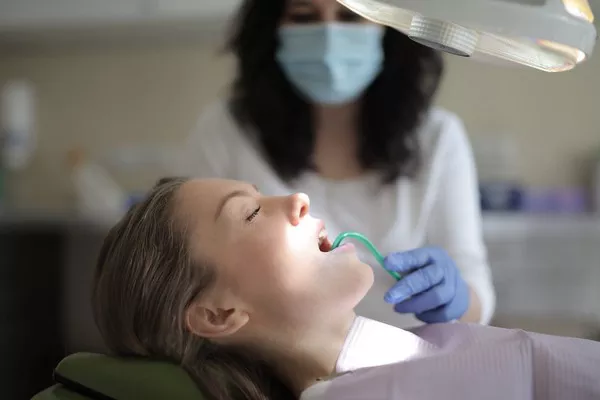Wisdom teeth removal, or third molar extraction, is a common dental procedure performed to alleviate issues such as overcrowding, impaction, or infection. While the decision to undergo this surgery is often accompanied by apprehension, understanding what to expect during the recovery process can help ease concerns and promote optimal healing. In this comprehensive guide, we’ll delve into the immediate post-operative appearance, healing timeline, visual changes, normal vs. abnormal signs, care tips, when to seek help, long-term expectations, and the importance of professional input.
Immediate Post-Operative Appearance
Following wisdom teeth removal, it’s normal to experience various symptoms due to the trauma inflicted on the oral tissues during the surgical procedure. Immediate post-operative appearance commonly includes:
Swelling: Swelling around the surgical site is expected and typically peaks within the first 24-48 hours before gradually subsiding.
Pain: Pain or discomfort is common and can be managed with prescribed or over-the-counter pain medications as directed by your oral surgeon.
Presence of Blood: It’s normal to experience bleeding immediately after surgery, which can be controlled by biting down gently on gauze pads provided by your dentist.
Healing Timeline
Understanding the timeline of healing after wisdom teeth removal can help patients manage their expectations and identify any abnormal symptoms. Here’s what to expect in the days and weeks following surgery:
First 24-48 Hours: Swelling and discomfort typically peak during this period. It’s essential to follow post-operative care instructions provided by your dentist to minimize pain and swelling.
2-3 Days: Bruising may become more apparent around the jawline and cheeks. Continuing to apply cold compresses can help reduce swelling and alleviate discomfort.
1 Week: Most patients experience a significant improvement in swelling and pain by the end of the first week. However, it’s essential to continue following post-operative care instructions to promote optimal healing.
2 Weeks: By the end of the second week, swelling should continue to decrease, and any residual discomfort should be manageable with over-the-counter pain medications.
3-6 Weeks: While most patients fully recover within the first few weeks, complete healing of the surgical site may take up to six weeks. During this time, it’s crucial to avoid strenuous activities that could disrupt the healing process.
see also:Why is my tongue yellow after wisdom teeth removal?
Visual Changes
Visual changes in the appearance of the mouth during the healing process are common and can include:
Swelling: Initially, the cheeks and jawline may appear swollen, which can distort the normal contours of the face. As swelling subsides, the facial appearance gradually returns to normal.
Bruising: Bruising around the surgical site and along the jawline may develop within a few days of surgery. The bruising typically resolves on its own within a week or two.
Incision Site: Depending on the surgical technique used, small incisions or stitches may be visible along the gumline. These typically dissolve or are removed by the oral surgeon during a follow-up appointment.
Normal vs. Abnormal Signs
While some degree of swelling, pain, and discomfort is normal after wisdom teeth removal, certain signs may indicate complications that require prompt medical attention. Differentiating between normal and abnormal symptoms is crucial:
Normal Signs: Mild to moderate swelling, discomfort, and bruising are common and expected during the healing process. These symptoms should gradually improve over time.
Abnormal Signs: Excessive swelling, persistent or worsening pain, prolonged bleeding, fever, or signs of infection (such as pus or foul odor) may indicate complications and should be reported to your oral surgeon immediately.
Care Tips
Proper post-operative care is essential for promoting optimal healing and reducing discomfort after wisdom teeth removal. Here are some tips to aid in the recovery process:
Follow Post-Operative Instructions: Your dentist will provide specific instructions for caring for the surgical site, including how to manage pain, swelling, and bleeding. It’s crucial to follow these instructions carefully.
Apply Cold Compresses: Applying cold compresses to the cheeks and jawline can help reduce swelling and alleviate discomfort during the first 24-48 hours after surgery.
Practice Good Oral Hygiene: While avoiding the surgical site, continue to brush and floss your teeth gently to maintain oral hygiene and prevent infection.
Stay Hydrated: Drink plenty of water to stay hydrated, but avoid using straws, as the sucking motion can dislodge blood clots and delay healing.
Eat Soft Foods: Stick to a soft diet consisting of soups, yogurt, smoothies, and mashed potatoes during the initial days following surgery. Avoid hard, crunchy, or spicy foods that could irritate the surgical site.
When to Seek Help
While some discomfort and swelling are expected after wisdom teeth removal, certain symptoms warrant immediate medical attention. Contact your oral surgeon if you experience any of the following:
Severe Pain: Persistent or worsening pain that is not relieved by prescribed medications.
Excessive Bleeding: Bleeding that persists beyond the first 24 hours after surgery or requires frequent changing of gauze pads.
Signs of Infection: Fever, swelling, redness, pus, or foul odor around the surgical site may indicate an infection and require prompt treatment.
Long-Term Expectations
Once fully healed, the mouth should return to its normal appearance, with any swelling, bruising, or discomfort resolved. However, it’s essential to note that wisdom teeth removal may result in long-term changes in sensation, particularly if nerves were affected during the surgical procedure. While most patients experience a gradual improvement in sensation over time, some may have permanent alterations in feeling or numbness in the lower lip, chin, or tongue.
see also:Should I Brush My Teeth After Wisdom Teeth Removal
Professional Input
Following wisdom teeth removal, it’s crucial to follow up with your oral surgeon or dentist for personalized care and to address any concerns. Regular check-ups allow your dental provider to monitor the healing process, remove any remaining stitches, and address any complications that may arise. If you have any questions or experience unusual symptoms during the recovery period, don’t hesitate to contact your dental provider for guidance and support.
Conclusion
Wisdom teeth removal is a common dental procedure that can result in various visual changes and symptoms during the healing process. Understanding what to expect and how to care for your mouth post-surgery is essential for promoting optimal healing and reducing discomfort. By following post-operative instructions, monitoring for signs of complications, and seeking prompt medical attention when needed, you can ensure a smooth recovery and maintain oral health in the long term.
FAQs about Wisdom Teeth Extraction and Healing
1. How to Know If Gums Are Healing?
Gums typically go through stages of healing after wisdom teeth extraction. Here are some signs that indicate healing is progressing:
- Reduced Pain and Swelling: As healing progresses, you should experience a decrease in pain and swelling around the extraction site.
- Pinkish Color: Initially, the gums may appear red or slightly swollen, but as they heal, they should return to a healthy pink color.
- Formation of Granulation Tissue: Granulation tissue, which looks like small white or yellowish dots, may develop as part of the healing process.
- Closure of the Socket: Over time, the socket where the tooth was removed should begin to close, and the surrounding gum tissue should smooth out.
If you notice any signs of infection, such as increasing pain, swelling, or discharge from the extraction site, or if you have concerns about the healing process, contact your dentist or oral surgeon for further evaluation.
2. How Long Does It Take for Wisdom Teeth Holes to Heal?
The healing time for wisdom teeth extraction sites can vary depending on factors such as the complexity of the extraction, your overall health, and how well you follow post-operative care instructions. In general, it can take several weeks for the extraction sites to fully heal. Initially, you may experience some discomfort, swelling, and minor bleeding, but these symptoms should gradually improve over time.
3. What Does a Healthy Wisdom Tooth Hole Look Like?
A healthy wisdom tooth extraction site should exhibit the following characteristics:
- Pinkish Color: The surrounding gum tissue should be a healthy pink color.
- Smooth Texture: The gums around the extraction site should feel smooth and gradually fill in as the socket heals.
- No Signs of Infection: There should be no signs of infection, such as excessive pain, swelling, or pus-like discharge.
- Minimal Discomfort: While some discomfort and mild swelling are normal during the healing process, it should gradually subside over time.
If you notice any concerning changes or signs of infection, contact your dentist or oral surgeon for evaluation.
4. How Do You Know If a Tooth Extraction Has Gone Wrong?
While complications from tooth extractions are rare, there are signs that may indicate a problem:
- Severe Pain: Persistent or increasing pain that is not relieved by pain medication may indicate an issue.
- Swelling: Excessive swelling that worsens over time may be a sign of infection.
- Bleeding: Heavy bleeding that does not stop or restarts after initially subsiding could indicate a problem.
- Foul Odor or Taste: An unpleasant odor or taste in the mouth could be a sign of infection.
You Might Be Interested In






























